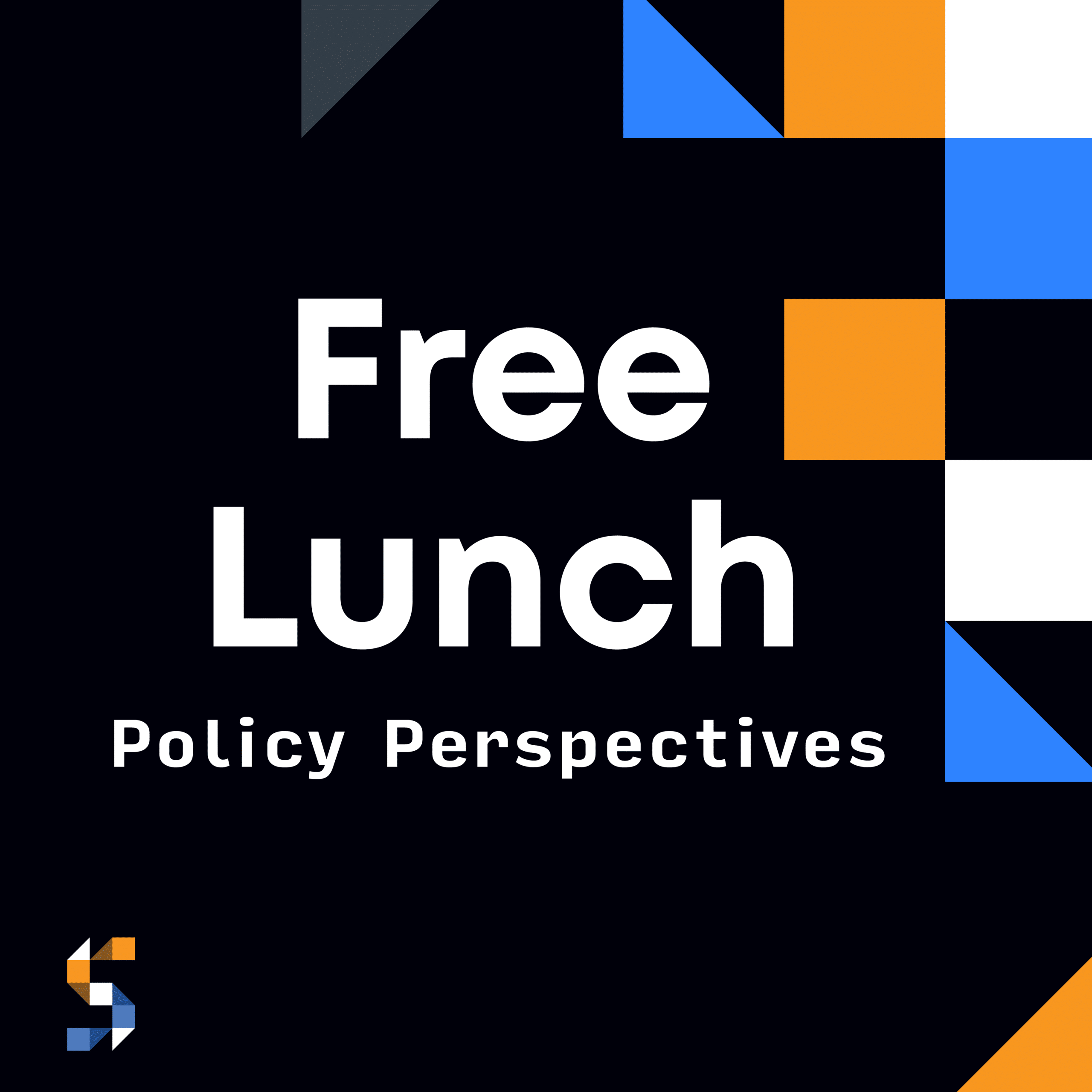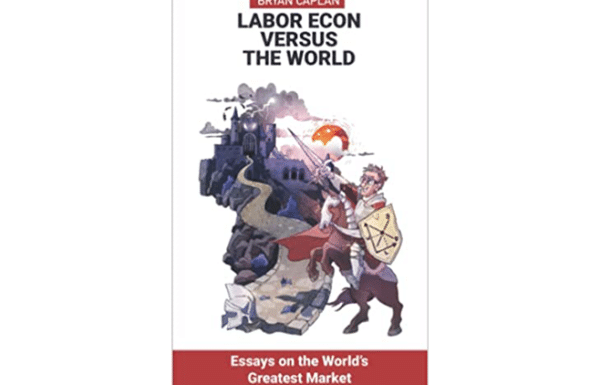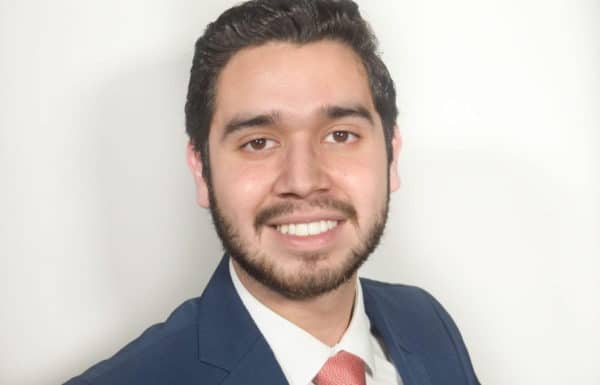EPISODE 1
Welcome to the first episode of “Free Lunch!” This is a podcast where people from different academic and political backgrounds discuss (and, often, disagree about) contemporary policy challenges. On the inaugural episode, for example, we have a statistician (Carlos), an economist (Scott), a philosopher (Greg), and a political scientist (Steve) discuss the influence of “big tech” and the February 2021 Texas electricity crisis. These discussions are freewheeling as we try to work through the strengths and weaknesses of our own views. For example, in our discussion about big tech, we consider the extent to which tech companies should censor content. We talk about content broadly, including both social media posts and Stripe’s decision to stop processing contributions to the Trump campaign in January 2021. You’ll find that even when we agree about a particular policy, we do so for entirely different reasons!
You can listen to the podcast on YouTube and Spotify.
The show notes, which contain links to resources such as Salem Center events and relevant articles, are below.
Show Notes
Big Tech
Salem Center events on the Big Tech:
Additional notes/context/links:
- Steve mentioned Facebook’s role in violence in Myanmar. Here’s more detail on Facebook’s role in inciting the violence from this NY Times article.
- One of Greg’s talks on free speech
Electricity Crisis
Salem Center events on the Texas Electricity crisis:
- Does Texas Value Reliable Energy
- Forget About What Broke: Why Poor Policies Made Texas Blackouts Inevitable
- Exploring Tradeoffs in the Texas Energy System
Additional notes/context/links:
- A Wall Street Journal article about the Public Utility Commission of Texas (PUC) raising electricity prices to $9,000 a megawatt hour. https://www.wsj.com/articles/texas-power-regulators-decision-to-raise-prices-in-freeze-generates-criticism-11614268158. Typically, prices are quoted per kilowatt hour (1/1000th of a megawatt hour). In Texas the average price of electricity before the crisis was $0.1139 per kilowatt hour (https://www.eia.gov/electricity/monthly/epm_table_grapher.php?t=epmt_5_6_a) – which is $113.9 per megawatt hour. Reuters notes that “[o]ne megawatt typically provides enough power for 200 homes on a hot summer day.” (https://www.reuters.com/article/texas-power-summer/update-1-after-winter-crisis-texas-power-grid-assures-will-meet-record-summer-demand-idUSL1N2LN27Q)
- Carlos mentioned a paper that shows that the cost of natural disasters hasn’t increased. In Bjorn Lornberg’s piece “Welfare in the 21st century: Increasing development, reducing inequality, the impact of climate change, and the cost of climate policies,” (https://doi.org/10.1016/j.techfore.2020.119981) he cites John McAneney et al.’s 2019 paper “Normalised insurance losses from Australian natural disasters: 1966-2017” (https://www.tandfonline.com/doi/full/10.1080/17477891.2019.1609406)
EPISODE 2: Poverty, Homelessness, Minimum Wage & Measurement
Welcome to the second episode of Free Lunch! This week featured Carlos, Greg, Scott, and Steve talking about poverty, homelessness, the minimum wage, and measurement issues. As Greg notes at the end, if you think we’ve missed something please email us at [email protected].
Listen on: YouTube and Spotify.
Show Notes
Salem Center Events Referenced
- Valentin Bolotnyy and Natalia Emanuel’s excellent paper “Why Do Women Earn Less Than Men? Evidence from Bus and Train Operators” and Bolotnyy’s Salem Center presentation
- David Neumark’s talk on poverty and the minimum wage
- Bruce Meyer’s talk on measuring poverty and the interagency report
- Judge Glock’s talk on street homelessness in Texas.
Poverty/Minimum Wage
President Biden signed an executive order that raised the minimum wage for federal contractors to $15/hour; in signing the order, he stated “I believe no one should work full time and still live in poverty. That’s why today, I raised the minimum wage to $15 an hour for people working on federal contracts.” Given this background, our conversation is organized around the question: suppose you were Joe Manchin and had the power to basically set the minimum wage anywhere between $7.25 and $15. What minimum wage would you set? Why? What tradeoffs are you ok with and which ones are you not ok with?
Minimum wage literature:
- David Neumark’s latest paper “Myth or Measurement: What Does the New Minimum Wage Research Say about Minimum Wages and Job Loss in the United States?*”
- Arin Dube’s literature review for the UK government on the effects of raising the minimum wage
- Table 2 from Joseph Sabia’s paper “Minimum Wages: An Antiquated and Ineffective Antipoverty Tool” is the source of the claim that raising the minimum wage would primarily benefit families with earnings three times the poverty line
- The poverty line for a household with three people is $21,960 https://www.census.gov/data/tables/time-series/demo/income-poverty/historical-poverty-thresholds.html)
- A cool paper that none of us mentioned is Orly Ashenfelter et al’s new piece “Wages, Minimum Wages, and Price Pass-Through: The Case of McDonald’s Restaurants”
Minimum wage additional context/stats:
- David Neumark notes that helping low-wage workers is not conceptually the same as helping those in poverty
- This distinction is important because the benefits of an increase in the minimum wage alone (i.e. without any other interventions) will mostly accrue to households above the poverty line
- The above is not to say that many below the poverty line won’t benefit or that policymakers should or should not raise the minimum wage it’s to point out that there are tradeoffs that politicians and voters need to consider
- The highest minimum wage is in Geneva, Switzerland, where the minimum wage is $25/hour as of September 2020
- Highest national minimum wages are equivalent to $13.40 USD / hour in Australia and Luxembourg (based on 2019 prices and converted into US dollars)
- Countries with minimum wages close to the US include Israel at $8/hour and Korea at $7.20 an hour.
- Denmark, which has been in the national debate recently for their relatively cheap big macs and relatively generous wages paid to McDonald’s workers, does not have a minimum wage but has an entirely different labor system called “flexicurity”. The system is basically the combination of a right to work state with strong unions, generous social insurance, and universal healthcare
- Working a full time (40 hours/week) job 50 weeks a year at $15/hour would make you $30,000. At $7.25 the comparable figure is $14,500.
- Median household income was $68,703 in 2019. Here, a lot rides on the definition of household which, for the census is “the related family members and all the unrelated people … who share the housing unit”
- The average household size in the US is 2.53 people and there were roughly 128.5 million households in the US in 2020
- (Not mentioned in discussion but interesting) “In 2017, more than 45 million Americans worked in occupations whose median wage was below $15 an hour. Although wages increases have finally been accelerating, 40% of Americans are living so close to the edge that they cannot absorb an unexpected $400 expense—not much, as car repairs or dental work go.”
Homelessness
We want to reiterate that when we say “homeless” or “unsheltered” we recognize that each homeless or unsheltered person is, first and foremost, a person deserving of love and respect and that the experiences of the unsheltered are heterogenous. Our intent is not to demonize or otherize or, for that matter, to romanticize this vulnerable population.
Note, this show was recorded on Friday, May 1. The proposition B election was on Saturday, May 2. Proposition B was approved 57% to 43%. Proposition B reinstated the camping ban in downtown Austin. While penalties aren’t set out in the proposition itself, prior to 2019 violations of the camping ban were a Class C misdemeanor – a crime punishable by a find up to $500. There were 18,000 citations issued between 2014 and 2016 inclusive of the end dates.
What are the benefits and tradeoffs of adopting proposition B and re-criminalizing camping? And, more generally, are there any policy approaches that you find particularly promising?
Homeless/Unsheltered additional context/stats:
- Most statistics are from the United States Interagency Council on Homelessness – an organization consisting of 19 separate federal agencies
- Here’s one definition of homeless
- Category 1: Literally Homeless Individual or family who lacks a fixed, regular, and adequate nighttime residence, meaning: (i) Has a primary nighttime residence that is a public or private place not meant for human habitation; (ii) Is living in a publicly or privately operated shelter designated to provide temporary living arrangements (including congregate shelters, transitional housing, and hotels and motels paid for by charitable organizations or by federal, state, and local government programs); or (iii) Is exiting an institution where (s)he has resided for 90 days or less and who resided in an emergency shelter or place not meant for human habitation immediately before entering that institution
- The 2019 Annual Homeless Assessment Report (AHAR) to Congress found that on a single night in 2019, roughly 568,000 people were experiencing homelessness in the United States. Nearly two-thirds (63%) were staying in sheltered locations—emergency shelters or transitional housing programs—and more than one-third (37%) were in unsheltered locations such as on the street, in abandoned buildings, or in other places not suitable for human habitation
- What do these numbers look like in Texas?
- 35,121 homeless in Texas 2010
- 23,678 in 2015
- 25,848 in 2020 (compared to 151,000 in CA and 92,000 in NY)
- In Austin the figures were:
- 2,506 homeless in 2020
- 1,832 in 2015
- 2,087 in 2010
- Using different definitions, 113,063 homeless students in 2015 in Texas, 231,305 in 2019. Note that roughly 60% of these students are those who are couch surfing
- This is defined as i. children and youths who are sharing the housing of other persons due to loss of housing, economic hardship, or a similar reason; are living in motels, hotels, trailer parks, or camping grounds due to the lack of alternative adequate accommodations; are living in emergency or transitional shelters; or are abandoned in hospitals; ii. children and youths who have a primary nighttime residence that is a public or private place not designed for or ordinarily used as a regular sleeping accommodation for human beings (within the meaning of section 11302(a)(2)(C) of this title); iii. children and youths who are living in cars, parks, public spaces, abandoned buildings, substandard housing, bus or train stations, or similar settings; and iv. migratory children (as such term is defined in section 6399 of title 20) who qualify as homeless for the purposes of this subtitle because the children are living in circumstances described in clauses (i) through (iii).
- The homeless are much more likely to die from non-natural causes than the general public
- The effects of fousing first programs, briefly discussed in this episode, are reviewed here
Measurement
- Phil Gramm (former Senator from Texas) and John Early (former assistant commissioner at the Bureau of Labor Statistics) Bureau of Labor Statistics (BLS) argue that BLS’ measurement of wage stagnation (roughly $23 an hour in 1972 and 2019) does not accurately capture the real value of worker’s compensation
- Paul Graham (Y-Combinator) argues, among other things, that looking at inequality via the Gini Coefficient misses a massive change in how the super-rich make their money from inheritances in the 1980’s to starting companies in the 2010’s


